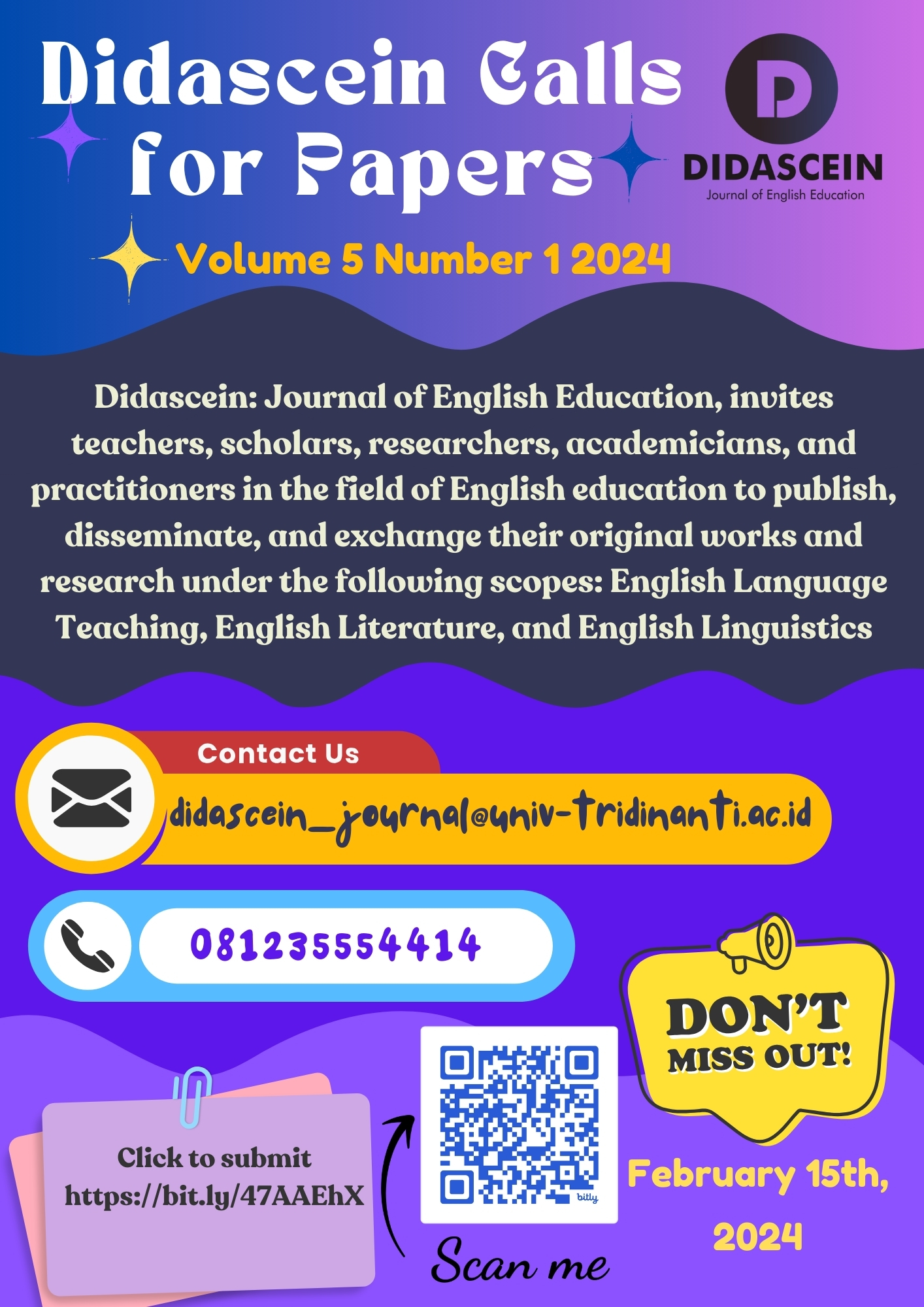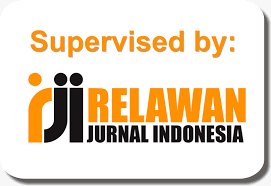Developing Writing Skills in Descriptive Text Using the Dictogloss Technique of Senior High School Students
DOI:
https://doi.org/10.52333/djoee.v4i2.209Keywords:
writing skill, dictogloss, descriptive textAbstract
Dictogloss is a teaching technique to help teachers in the teaching and learning process, particularly in teaching descriptive text. This study was aimed at finding out whether or not there were any significant differences between students who were taught by using Dictogloss and students who were not. There were 90 students of tenth grade MAN 2 Palembang involved in this investigation comprising two groups, 45 students of the experimental group and 45 students of the control group. The Purposive sampling technique also was used in this study. The writers used a non-equivalent group design. They taught the experimental group students to write descriptive writing by using the dictogloss technique, meanwhile, the control group students taught by using the lecturing method. The data from two groups were collected from the result of the pretest and post-test scores which were analyzed to get the main score differences. The writers found out that the mean score of the experimental group improved significantly from 63.8 pretest to 73.4 in the posttest. The results of the Independent T-test showed that the mean score between the control and experimental groups was 4.664. It meant that there was a very significant difference between the two groups which was caused by the technique given to the experimental group.
References
Algeo, J. (2010). The origins and development of the English language. (6th ed). Boston: Wadsworth.
Barkaoui, K. (2007). Teaching writing to second language learners: Insights from theory and research. TESL reporter, 40(1), 35-48.
Brown, H. D. (2004). Language assessment: Principles and classroom practices. NY: Pearson Education Inc.
Claudia. C, Sada. C, & Wardah. (2017). “Improving students’ ability in writing a paragraph orientation of narrative text through dictogloss technique”, Jurnal Pendidikan dan Pembelajaran”, 8(6), 1-9.
Creswell, J. W. (2012). Educational research: Planning, conducting, and evaluating quantitative and qualitative research (4th ed). Boston, MA: Pearson Education Inc.
Irawan, R. (2023). The Use of Short Animated Movie to Improve Student's Skill in Writing Descriptive Text. Didascein: Journal of English Education, 4(1), 60-67.
Gery, G., & Marnat. (2009). Handbook of psychological assessment (4th ed). Canada: Jhon Wiley & Son, Inc.
Jacobs, G., & Small, J. (2003). Combining dictogloss and cooperative learning to promote language learning. The Reading Matrix, 3(1), 1-15.
Linse, C. T. (2006) Practical English language teaching: Young learners. New York: McGraw-Hill.
Nunan, D. (2003). Practical English language teaching: Young learners. Singapore: McGraw-Hill, inc.
Pardiyono. (2007). Pasti bisa! Teaching genre-based writing. Yogyakarta: CV. Andi Offset.
Patel, M.F & Jain, P.M. (2008). English language teaching methods: tools and technique. Jaipur: Sunrise Publishers & Distributors.
Wajnryb, R. (1990). Grammar dictation. Oxford: Oxford University Press.
Wallen, E. N. & Fraenkel, J. R. (1991). Educational research: A guide to the process. New York: McGraw-Hill, inc.
Zemach, D. E. & Rumisek, L. A. (2005). Academic writing: from paragraph to essay. New York: Oxford: Macmillan Publisher Ltd.
Downloads
Published
How to Cite
Issue
Section
License
Copyright (c) 2023 Jenny Elvinna

This work is licensed under a Creative Commons Attribution-NonCommercial-ShareAlike 4.0 International License.













